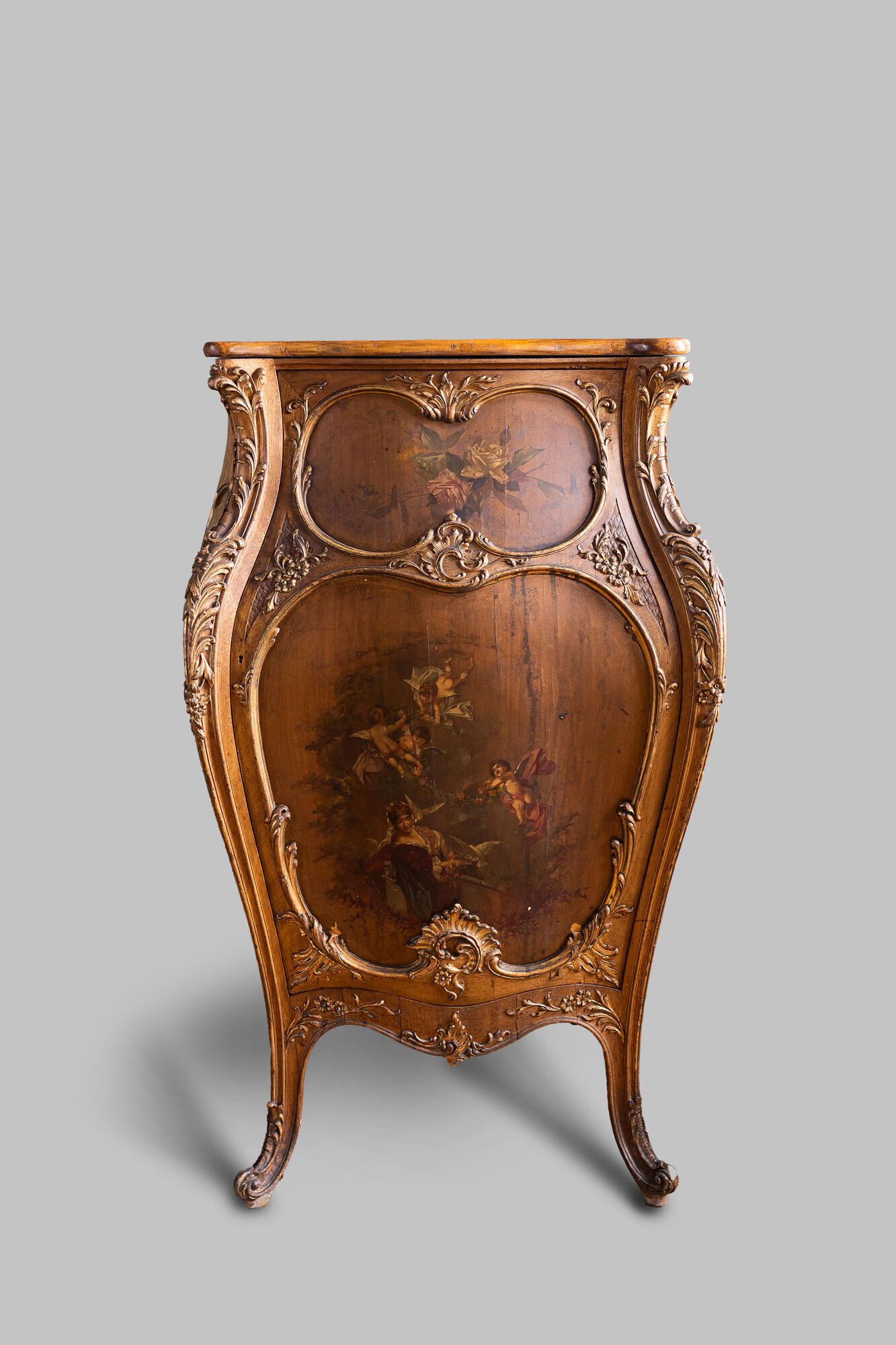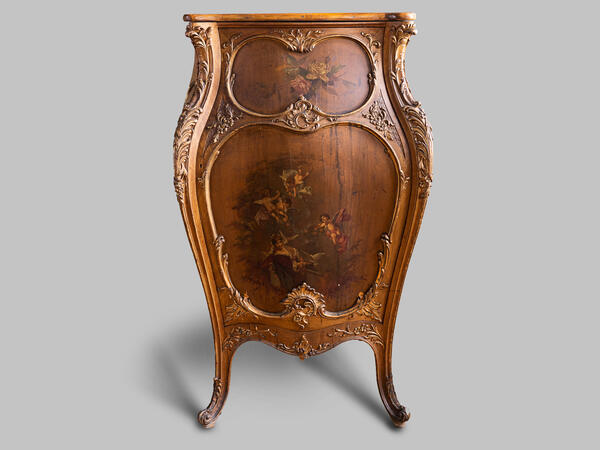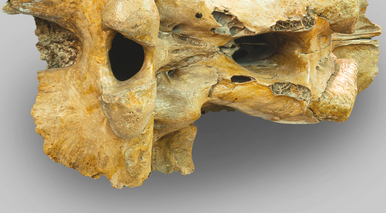The Volsk Museum of Local History displays an antique fancy-shaped single-leaf cabinet made of polished wood in the middle of the 18th century.
Mentions of the first cabinets appeared in the 13th century, but until the 16th century, they meant not furniture, but a room in which household utensils and clothes were stored. By the 18th century, cabinets began to be distinguished by their purpose: a bookcase, a cupboard, a cabinet for business paper, which later turned into a secretaire, a bureau with a folding table, which was comfortable for composing documents. The cabinet configuration depended on its purpose.
The wardrobe, or chiffonier, in which clothes were stored, was invented in England. It was distinguished by a bar, which had hangers for clothes. Moreover, there were shelves and drawers where hats, shoes, and other clothes were stored.
A reduced version of such a cabinet, without a bar and with drawers, was called a small chiffonier in Russia. This name was actively used in the 17th — 18th centuries and meant a narrow wall piece of furniture with many drawers arranged like a commode.
The chiffonier from the museum collection has elegant wave facades, and the sides are decorated with a floral pattern and C-shaped curls. The front facade door is a figured frame with two panels — buried decorative elements of complex shape. An upper panel is painted with flowers, and on the lower panel, the master depicted a whole story — a woman surrounded by soaring cupids and doves. The chiffonier corners, frame, base, and legs are embellished with carved curls.
Chiffoniers were not designed for a heavy load and were intended for storing women’s underwear, small personal items, jewelry, sometimes valuable documents or money. They were most often placed in bedrooms opposite the bed.
Mentions of the first cabinets appeared in the 13th century, but until the 16th century, they meant not furniture, but a room in which household utensils and clothes were stored. By the 18th century, cabinets began to be distinguished by their purpose: a bookcase, a cupboard, a cabinet for business paper, which later turned into a secretaire, a bureau with a folding table, which was comfortable for composing documents. The cabinet configuration depended on its purpose.
The wardrobe, or chiffonier, in which clothes were stored, was invented in England. It was distinguished by a bar, which had hangers for clothes. Moreover, there were shelves and drawers where hats, shoes, and other clothes were stored.
A reduced version of such a cabinet, without a bar and with drawers, was called a small chiffonier in Russia. This name was actively used in the 17th — 18th centuries and meant a narrow wall piece of furniture with many drawers arranged like a commode.
The chiffonier from the museum collection has elegant wave facades, and the sides are decorated with a floral pattern and C-shaped curls. The front facade door is a figured frame with two panels — buried decorative elements of complex shape. An upper panel is painted with flowers, and on the lower panel, the master depicted a whole story — a woman surrounded by soaring cupids and doves. The chiffonier corners, frame, base, and legs are embellished with carved curls.
Chiffoniers were not designed for a heavy load and were intended for storing women’s underwear, small personal items, jewelry, sometimes valuable documents or money. They were most often placed in bedrooms opposite the bed.



